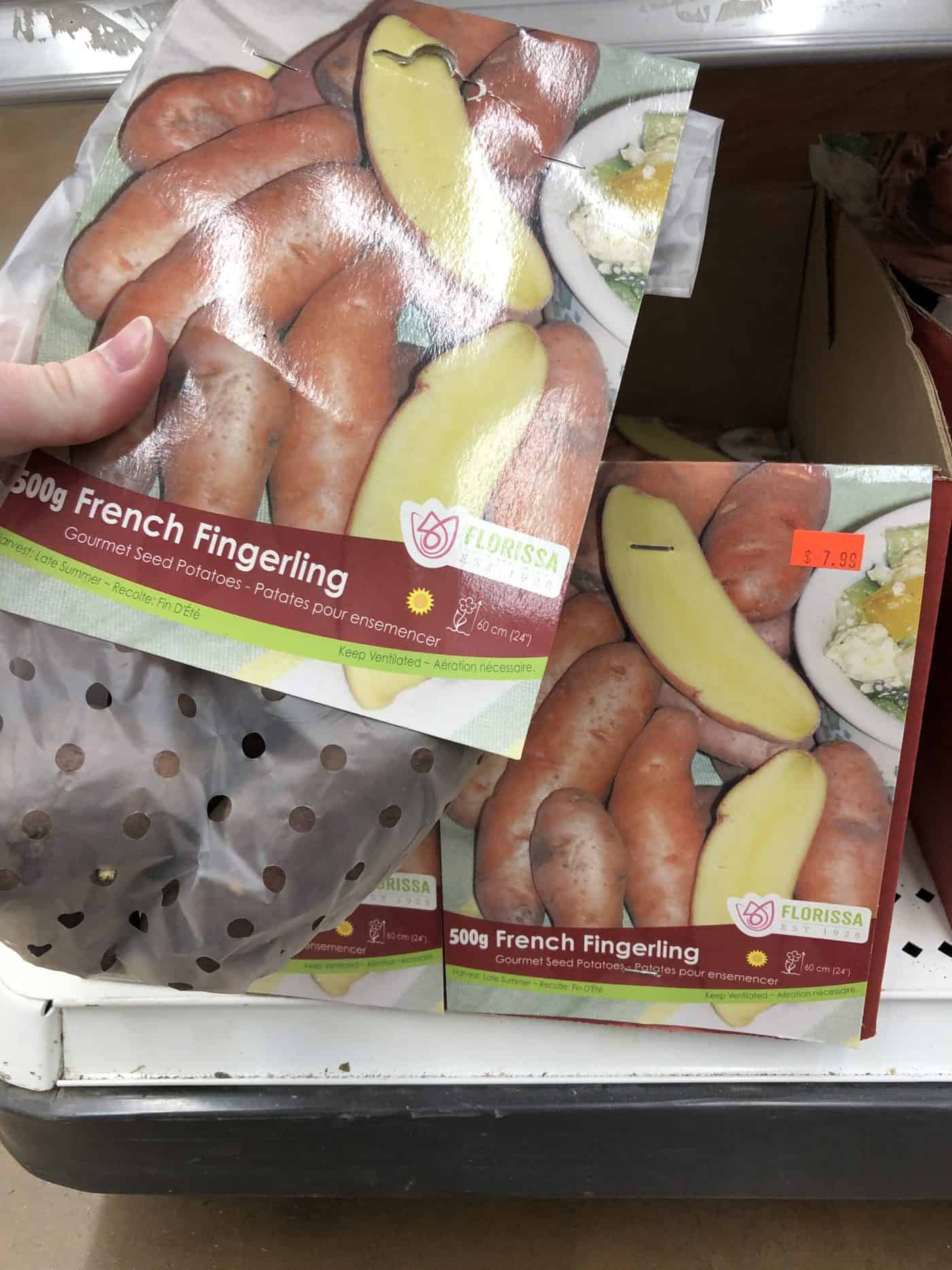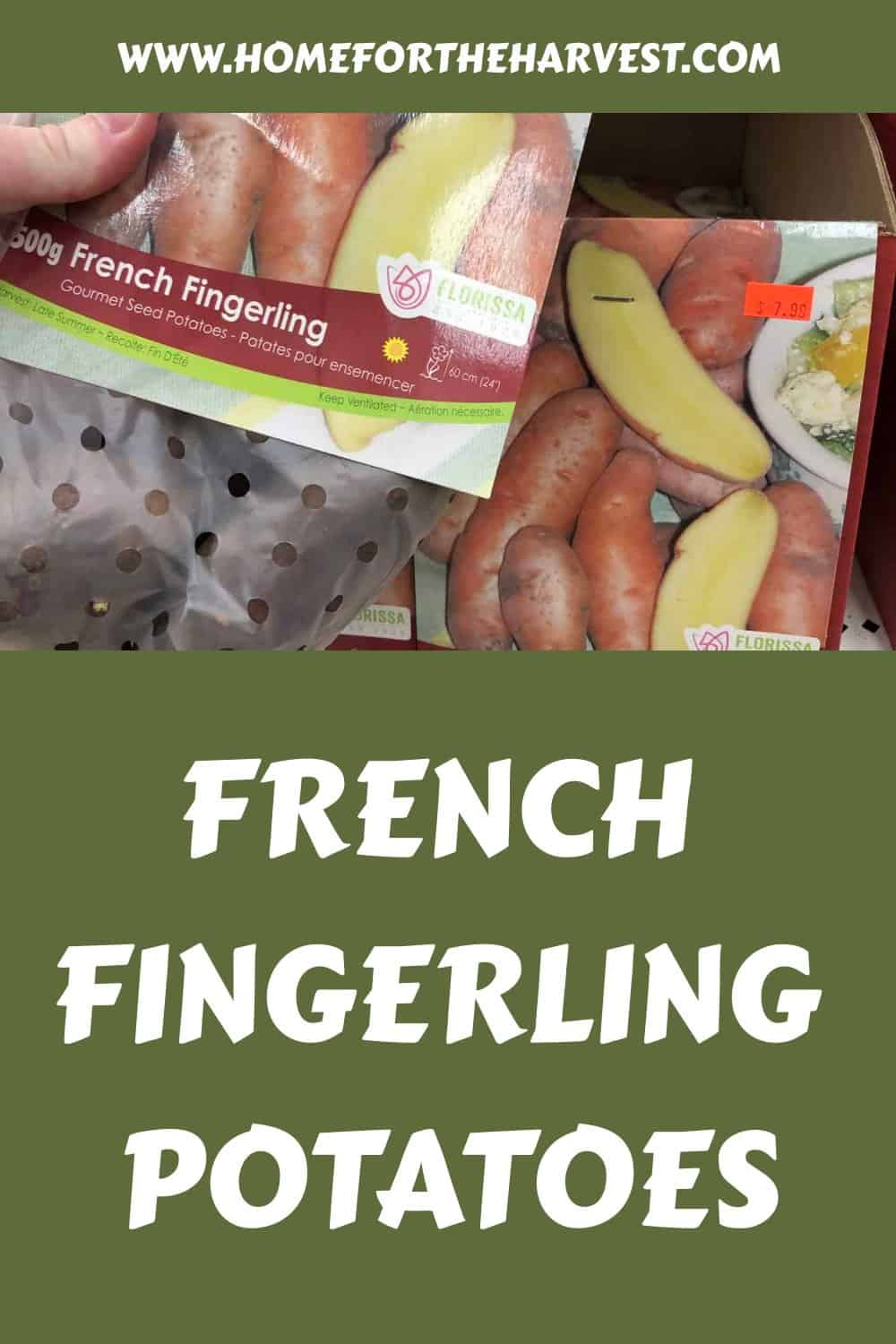French Fingerling potatoes are an heirloom variety known for their exceptional nutty and sweet flavor. These skinny 3″-4″ long potatoes have thin, smooth red skin and rich yellow flesh. French Fingerling potatoes are wonderful boiled, roasted, or added to potato salads or casseroles. This is a late-season variety, usually taking 95-125 days to grow in the garden.
Introduction to French fingerling potatoes
French Fingerling potatoes are one of the most delicious varieties of potatoes available, known for their sweet and nutty flavor. These potatoes have dark rusty red skin with golden yellow flesh that is speckled with red flecks.
To grow potatoes successfully, you will need full sun and well-drained, nutrient-rich soil. They are best planted in the spring a few weeks before the expected last frost and will grow to maturity in around 100-120 days.
Where to buy French fingerling seed potatoes
Looking to purchase French Fingerling seed potatoes for your garden? Fortunately, there are many retailers that sell this popular potato variety. Some popular places to check include seed companies, garden centers, local farm stands, and farmer’s markets.
When to plant potatoes in your garden
For the earliest harvest, plant your potatoes 2-4 weeks before the average last frost date in your area. Here is a general guideline of which month to plant your potatoes, by USDA plant hardiness zone:
- Zone 10+: January
- Zone 9: early February
- Zone 8: late February
- Zone 7: early March
- Zone 6: late March
- Zone 5: early April
- Zone 4: late April
- Zone 3: early May
- Zone 2-: late May
Preparing seed potatoes for planting
Seed potatoes for larger varieties like this one are usually cut into several pieces and pre-sprouted before being planted outdoors. To do this, simply cut sections of the seed potato that each has at least 2-3 eyes.
Place the cut potato pieces in a warm location and let them sit for 1-2 days to allow them to dry. Then keep them in a cool dry spot out of direct sunlight to sprout. It usually takes about three weeks for them to sprout to an inch or two. Once sprouted, you are ready to plant!
How to plant French fingerling potatoes
French Fingerling potatoes grow best when planted in full-sun locations that receive at least 6-8 hours of direct sunlight per day. They also grow best in rich, well-drained, loose, and slightly alkaline soil. These indeterminate potatoes can be planted in the ground, in a raised bed, or in a big grow bag.
French Fingerling Potatoes can be planted outdoors 2-4 weeks before the average last frost date. Simply dig a trench that is 3-6 inches deep, place the seed potatoes in the trench at least 8 inches apart, and then cover them with 3-4 inches of soil.
How to grow French fingerling potatoes
French Fingerling Potatoes are relatively easy to grow and require little maintenance. These potatoes will need to be watered regularly, especially during dry spells or periods of extended heat. Be sure to keep the soil moist but not soggy to prevent root rot.
As the plants sprout, continue adding more soil until only the top few inches of the potato plant are sticking out of the top of the soil. Keep adding soil around the stem as the plant grows to “hill” up the potatoes.
Watering requirements for French fingerling potatoes
French Fingerling Potatoes require regular watering in order to thrive and grow properly. These potatoes are especially sensitive to drought and will need more frequent watering during hot, dry periods. It is best to keep the soil moist but not soggy, as overly wet conditions can lead to root rot. Ideally, French Fingerling Potatoes should be watered 1-2 times per week unless conditions are overly hot and dry.
Fertilizing French fingerling potatoes
When growing French Fingerling Potatoes, it is important to use the right kind of fertilizer in order to get the best results. The ideal fertilizer for these potatoes will be rich in phosphorus and potassium. Slow-release organic granular fertilizers are generally the easiest to apply.
Harvesting French fingerling potatoes
French Fingerling Potatoes are typically ready to harvest around 100 days after planting. These potatoes can be harvested by gently digging around the plant with a spade or trowel. Be careful not to damage the potato tubers when harvesting. Once the potatoes have been dug up, brush off any excess dirt and allow them to cure in a cool, dark place for 1-2 weeks. After curing, the potatoes can be stored in a cool, dry place for up to 6 months.
Recipes for French fingerling potatoes
There are many delicious recipes that can be made using French Fingerling Potatoes. Some popular options include roasted potatoes, mashed potatoes, potato salad, and french fry recipes.
When preparing roasted potatoes, be sure to cut the potatoes into even-sized pieces so that they cook evenly. For mashed potatoes, boiling or steaming the potatoes until they are soft is the best method. Be sure to add plenty of butter and milk (or cream) to make them extra creamy and delicious!
Companion plants for French fingerling potatoes
French Fingerling Potatoes do best when planted alongside other plants that can help improve soil quality and provide some shade from the hot summer sun. Good companion plants for potatoes include leafy greens, herbs, and other root vegetables like beets and carrots. Additionally, they can benefit from being planted alongside flowers like marigolds, which help to repel harmful pests and insects.
Pests affecting French Fingerling potatoes
Some common pests that affect French Fingerling Potatoes include aphids, Colorado potato beetles, cutworms, and slugs. These pests can cause serious damage to potato plants and should be controlled as soon as possible.
One of the best ways to control pests is to use companion plants that help repel them. Marigolds are a good option for natural pest control. Additionally, many effective organic pesticides can be used to control pests on French Fingerling Potatoes. Be sure to follow the instructions carefully when using any pesticide (even natural ones).
Diseases affecting French Fingerling potatoes
There are a few common diseases that can affect French Fingerling Potatoes, including early blight, late blight, and Verticillium wilt. These diseases can cause serious damage to plants and should be controlled as soon as possible.
Early blight is a fungal disease that affects the leaves of French fingerling potatoes, causing them to yellow and die. This disease can be controlled by regularly inspecting the plants for early signs of infection, as well as using fungicides or other chemical treatments.
Late blight is another serious fungal disease that causes French fingerling potato leaves and tubers to rot. This disease can be prevented by ensuring that the plants have good air circulation, as well as by using fungicides or other chemical treatments.
Verticillium wilt is a fungal disease that can affect French fingerling potatoes, causing the leaves to yellow and eventually die. This disease can be controlled by using fungicides or other chemical treatments. Additionally, it is important to remove any infected plant material from the area to prevent the disease from spreading.
Regularly inspecting plants for early signs of infection is also key to preventing and managing these diseases. Additionally, using good cultural practices like watering and fertilizing regularly can help to keep French Fingerling potato plants healthy and disease-free.







